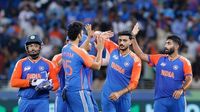The Asia Cup has long been a battleground where bowlers carve their legends, turning the tide of matches and, often, entire tournaments. From the earliest editions in the 1980s right up to the present day, the competition has been graced by bowlers whose spells have decided finals, broken partnerships, and left batsmen scratching their heads. This year’s tournament is no exception, with both established greats and new faces making headlines and etching their names into cricketing folklore.
One name that stands tall in the annals of Asia Cup history is Muttiah Muralitharan. The Sri Lankan spin wizard remains the most successful bowler in the tournament’s history, snaring 30 wickets in 24 matches across six editions from 1995 to 2010. His role was straightforward but crucial: control the middle overs, stifle the opposition, and pick up key wickets. Muralitharan’s consistency and ability to build pressure allowed Sri Lanka to claim four titles during his tenure, in 1997, 2004, 2008, and 2010. His spells in finals, particularly his ability to keep the scoring rate in check, gave his teammates the freedom to attack from the other end. Even when Ajantha Mendis stole the show in the 2008 final, it was Muralitharan’s stranglehold in the middle overs that set the stage.
Speaking of Sri Lanka, Lasith Malinga’s sling-arm action and pinpoint yorkers terrorized batsmen for years. With 29 wickets in just 14 Asia Cup matches, Malinga’s impact is undeniable. His bursts with the new ball and his deadly accuracy at the death made him a match-winner in both the opening and closing stages of an innings. The 2010 final against India saw Malinga at his best, dismantling the top order and sealing the title for Sri Lanka. Even in 2018, as his career was winding down, Malinga showed he still had it, grabbing 4 for 23 against Bangladesh in the opening match. His longevity and ability to deliver under pressure made him a pillar of Sri Lanka’s bowling attack.
No discussion about Asia Cup bowling heroes would be complete without mentioning Ajantha Mendis. Bursting onto the scene in 2008, Mendis baffled batsmen with his carrom ball and other variations, collecting 26 wickets in just eight matches across four editions. His 6 for 13 in the 2008 final against India remains one of the most memorable spells in the tournament’s history. That performance didn’t just win Sri Lanka the trophy—it also signaled a new era of spin bowling, as batsmen across the world scrambled to decode his mysterious deliveries. Although his international career was relatively short, Mendis’s Asia Cup exploits ensured his place among the greats.
Pakistan, too, has produced its share of Asia Cup bowling maestros. Saeed Ajmal, with his deceptive doosra, was a constant threat between 2008 and 2014, taking about 25 wickets. His crowning moment came in the 2012 final in Dhaka, where his tight spell in the middle overs helped Pakistan edge out Bangladesh by just two runs. Ajmal’s ability to restrict runs and break partnerships allowed Pakistan’s seamers to attack with confidence later in the innings. His legacy endures, even after his career was cut short due to issues with his bowling action.
India’s legacy in the Asia Cup is also built on the backs of its bowlers. Ravindra Jadeja, the left-arm spinner and livewire in the field, has been a mainstay from 2010 to 2022. With 25 wickets in about 20 matches, Jadeja’s knack for controlling the middle overs and chipping in with crucial wickets has been vital to India’s successes in 2010, the T20 edition of 2016, and 2018. His standout moment came in 2018 against Bangladesh, where he took 4 for 29 in the Super Four stage, setting up India’s march to the title. Jadeja’s athleticism and calm under pressure have made him a fan favorite and a reliable match-winner.
Modern Indian bowling has also found a star in Bhuvneshwar Kumar. Known for his prodigious swing and ability to strike with the new ball, Bhuvneshwar produced one of the most remarkable spells in Asia Cup history in the 2022 T20 edition, taking 5 wickets for just 4 runs against Afghanistan. His contributions in India’s 2016 and 2018 title runs, often in tandem with Jasprit Bumrah, gave India a potent opening attack that few teams could handle. Bhuvneshwar’s control and consistency, especially at both ends of the innings, have cemented his reputation as one of India’s most dependable bowlers.
Of course, the Asia Cup’s rich bowling tradition stretches back decades. Kapil Dev, India’s World Cup-winning captain, was the leading wicket-taker in the 1990/91 edition, claiming nine wickets and spearheading India’s title run. His ability to swing the new ball and break partnerships early set the tone for many Indian victories. Abdul Qadir, Pakistan’s legendary leg-spinner, was a trailblazer in the 1980s, finishing as top wicket-taker in the 1986 edition with nine wickets and helping Pakistan lift the trophy. His mastery of the googly and flighted deliveries inspired generations of Pakistani spinners.
Arshad Ayub’s nine wickets in the 1988 Asia Cup, including a match-winning 5 for 21 against Pakistan, were instrumental in India’s triumph that year. Though his international career was brief, Ayub’s disciplined and accurate bowling in the tournament left a lasting impression. Anil Kumble, India’s greatest Test wicket-taker, also made his mark in the Asia Cup, especially in 1995 when he took seven wickets to lead India to the title. His flat, fast leg-spin forced errors from batsmen, providing crucial breakthroughs in the middle overs.
Fast forward to the present, and a new name is lighting up the Asia Cup stage: Kuldeep Yadav. The left-arm wrist spinner has been in scintillating form, taking seven wickets in just two matches at an astonishing average of 3.57 and an economy rate of 4.05. Against Pakistan, Kuldeep returned figures of 3 for 18 in his four overs, dismissing Sahibzada Farhaz, Mohammad Nawaz, and Hasan Nawaz to claim the Player of the Match award. In an earlier game against the United Arab Emirates, he took 4 for 7 in just 2.1 overs, again earning top honors.
What’s behind Kuldeep’s resurgence? According to former Indian batting coach Abhishek Nayar, it’s all about subtle technical adjustments. “He used to bowl on sand where the ball stops. He bowled with speed to gain more bite. He also changed his run-up, the angle with which he ran he made it straight. Also, he jumped a bit too much before which has changed, allowing him to transfer a lot more momentum. Kuldeep has worked a lot on his bowling and was going through a difficult time,” Nayar explained on Sony Sports. The result of this hard work is clear for all to see, as Kuldeep’s performances have been pivotal for India in this year’s tournament.
As the Asia Cup continues, the spotlight remains firmly on the bowlers. From the legendary spells of Muralitharan and Malinga to the new magic of Kuldeep Yadav, it’s clear that bowling brilliance often tips the scales in this fiercely contested tournament. With India set to face Oman at the Sheikh Zayed Stadium in Abu Dhabi on Friday, fans can expect more fireworks from the men with the ball.
In the end, the Asia Cup’s story is as much about the bowlers as it is about the batsmen. Every edition brings new heroes, but the legacy of those who have dominated with the ball continues to shape the tournament’s rich history—and keeps cricket lovers coming back for more.





